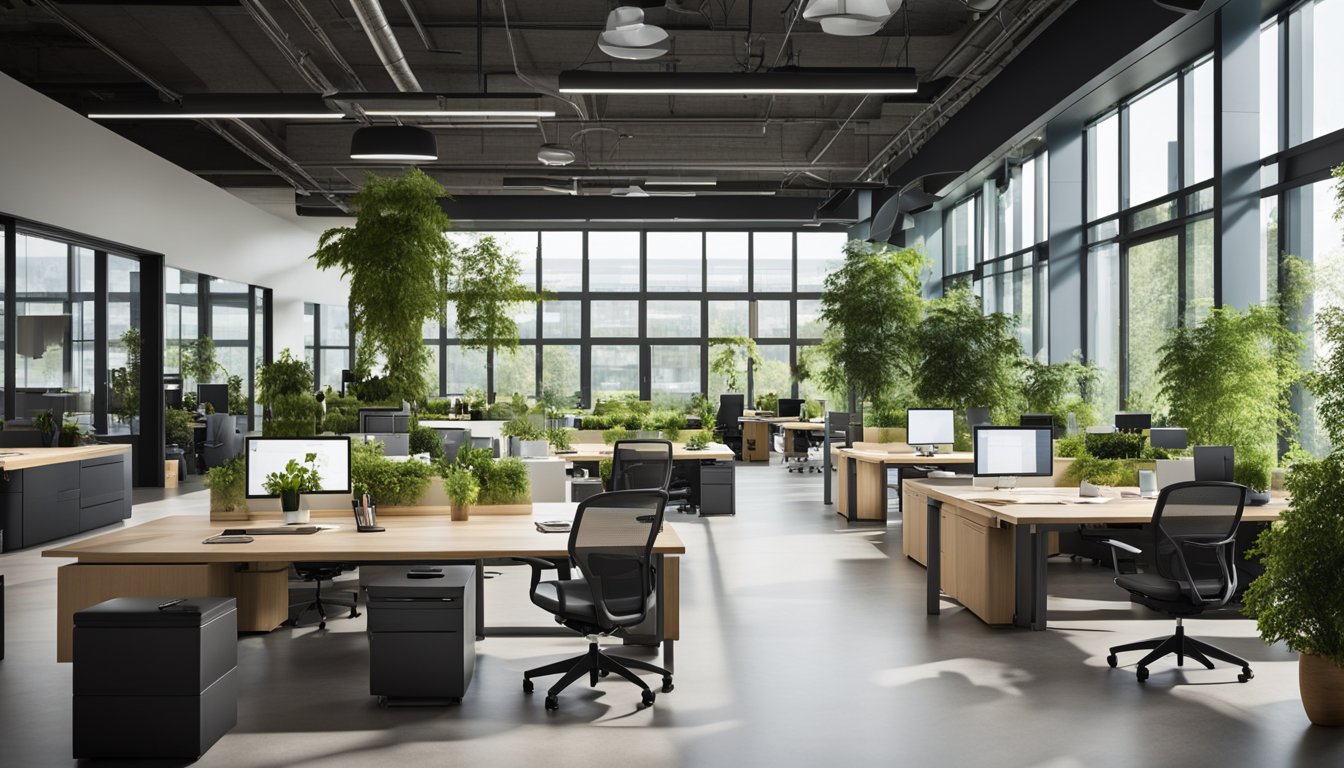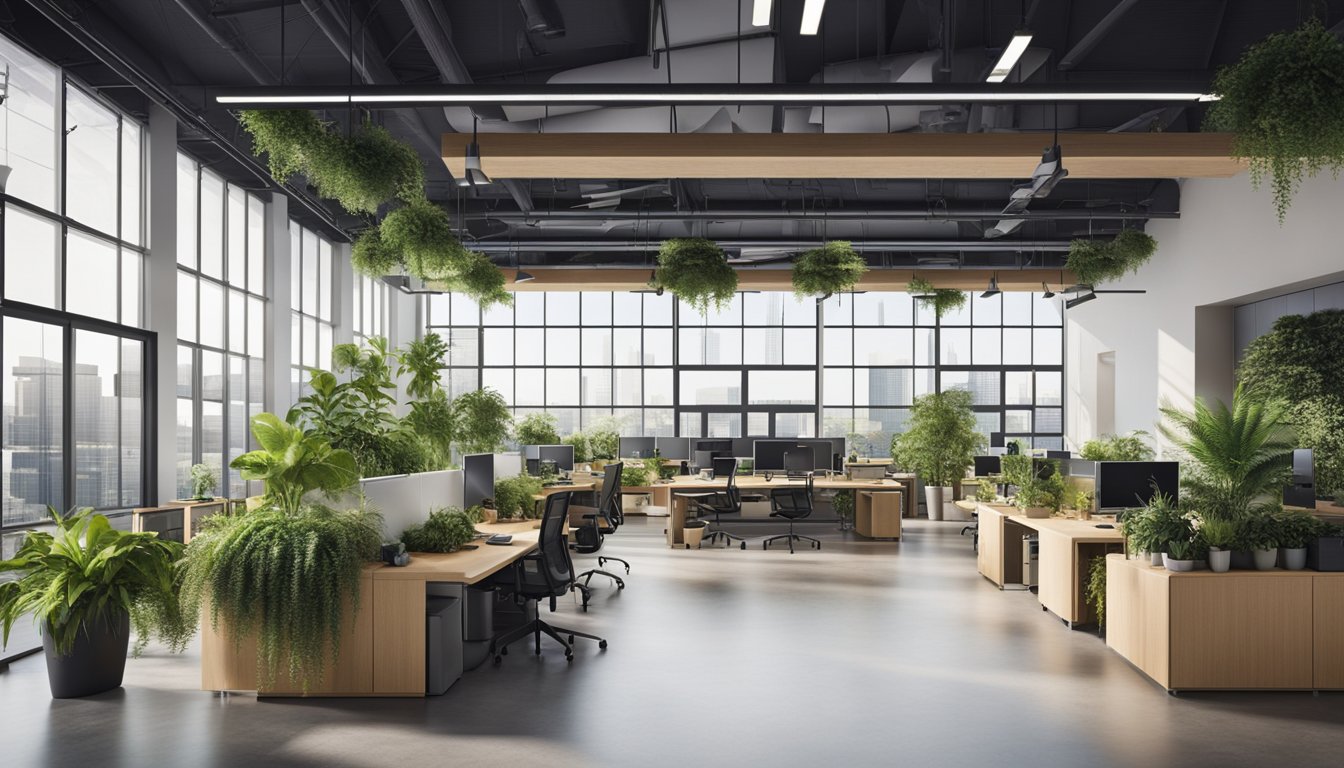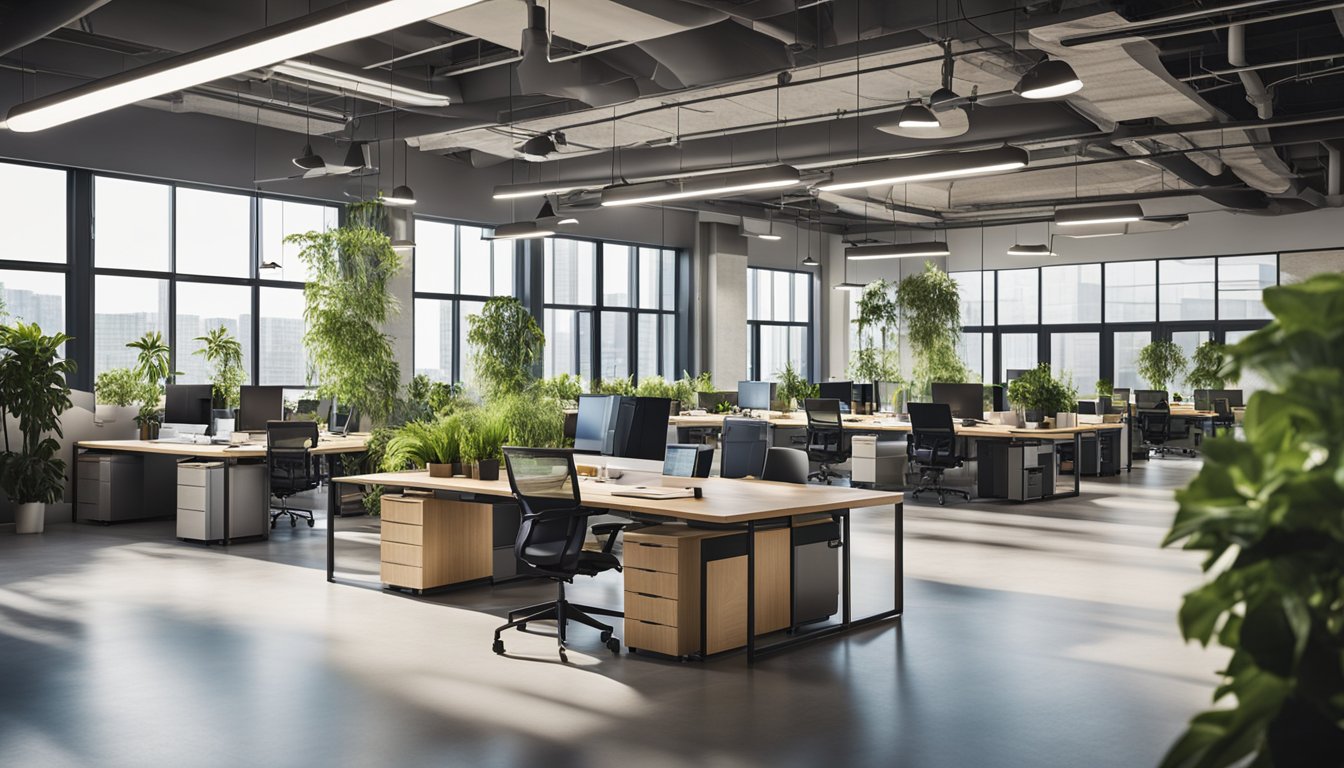Late updated: 02 Apr 2025 11:04
Written by: Amber Collins
Innovative Eco-Friendly Office Space Ideas: Transform Work Environments
In today's rapidly evolving world, our commitment to sustainability is more important than ever. We're beginning to see offices that go far beyond traditional designs, opting instead for eco-friendly innovations that make a real difference. Choosing sustainable office practices not only reduces environmental impact but also creates more inviting and healthier workspaces for everyone involved. This transformation can range from integrating biophilic design elements, which offer the benefits of natural light and indoor greenery, to adopting energy-efficient technologies and paperless solutions.

As we explore eco-friendly office spaces, it becomes clear that even small changes can have a significant impact. Encouraging hybrid and remote work, investing in green technologies, or simply adding a touch of nature with indoor plants can rejuvenate a workspace, making it more enjoyable and efficient. By reimagining how we utilise our work environments with sustainability in mind, we can foster greater productivity and employee satisfaction.
Ultimately, embracing sustainable practices allows us to contribute meaningfully to environmental preservation while also enhancing our daily work lives. As we continue this exploration, we'll delve deeper into practical strategies that can be implemented in offices of any size, paving the way for innovation and sustainability in the workplace.
Key Takeaways
- Sustainable practices can transform office environments.
- Small changes yield significant benefits in workspaces.
- Embracing sustainability enhances productivity and satisfaction.
Essentials of Eco-Friendly Office Design
An eco-friendly office design focuses on minimising environmental impact while enhancing employee well-being and productivity. From using natural light strategically to choosing sustainable materials and improving energy efficiency, each element plays a vital role in creating a sustainable office environment.
Leveraging Natural Light
Incorporating natural light serves multiple purposes in an eco-friendly office. It reduces energy consumption by lessening the need for artificial lighting. Utilising skylights, large windows, and glass partitions maximises this natural resource. Not only does this save energy, but exposure to natural light boosts productivity and improves the mood and well-being of employees. According to studies, the optimal arrangement of workstations near windows can enhance comfort and morale.
Layering window coverings, such as blinds, allows us to control the intensity of light, preventing glare while still benefiting from sunlight. Mirror placement can distribute natural light further into the room, illuminating spaces without extra energy expenditure.
Selecting Sustainable Materials
Choosing sustainable materials is crucial for reducing environmental impact. We should opt for eco-friendly furniture made from recycled or reclaimed materials. Certifications such as FSC (Forest Stewardship Council) can guide us in selecting responsibly sourced wood products. Carpets and flooring made from natural fibres or recycled content are other considerations to maintain sustainability.
Using low-VOC (volatile organic compounds) paints and adhesives can significantly improve indoor air quality. Modular and flexible office furniture not only allows for adaptability but also minimises waste when reconfiguring or upgrading office layouts. Prioritising durability in materials ensures longevity, reducing the frequency and resource use of replacements.
Enhancing Energy Efficiency
Improving energy efficiency is a core component of sustainable office design. Installation of energy-efficient lighting systems, such as LED lights, can dramatically lower electricity use. Smart lighting solutions, with sensors and timers, ensure that we use energy only when necessary, significantly reducing waste.
Incorporating solar panels for clean, renewable energy supply can aid in reducing reliance on conventional power sources. Additionally, optimising heating and cooling systems with efficient HVAC units and proper insulation further conserves energy. Encouraging practices such as turning off computers and machinery when not in use contributes to a significant reduction in the office's carbon footprint.
Innovative Strategies for Sustainable Operations

Adopting sustainable practices in the workplace involves implementing green policies and improving the quality of the indoor environment. These strategies focus on reducing waste, enhancing energy efficiency, and boosting employee well-being, ultimately leading to a more eco-friendly office environment.
Implementing Green Policies
We can establish effective green policies by opting to go paperless, implementing recycling programmes, and encouraging the use of reusable office supplies. Transitioning to a paperless environment not only reduces waste but also saves on printing costs. Implementing recycling bins for paper, plastics, and glass encourages responsible waste management.
Encouraging the use of eco-friendly cleaning products and office supplies, like sustainable stationery, contributes to lowering our office's carbon footprint. Additionally, adopting a compost bin in communal kitchen areas can further reduce our ecological footprint. Promoting the use of reusable water bottles and bike racks also supports sustainable commuting practices. Incentivising remote work reduces office energy consumption while maintaining high-speed internet access ensures productivity is not compromised.
Improving Indoor Environment Quality
Improving indoor environment quality can significantly impact employee well-being and productivity. Utilising energy-efficient lighting reduces energy bills and lessens carbon emissions. Incorporating indoor plants not only enhances indoor air quality but also serves as a source of inspiration and relaxation for employees.
Ergonomic furniture contributes to comfort and health, improving focus and reducing the likelihood of discomfort or injury. Maintaining optimal temperature and humidity levels, possibly using renewable energy sources, can further sustain an ideal workspace environment. Emphasising organisation and sustainable design resonates with innovation, creating an office space that is both functional and inspiring. By integrating these strategies, we foster a workspace that aligns with our sustainability values.
Frequently Asked Questions

Incorporating eco-friendly practices into office spaces involves considering sustainable practices, promoting green environments, and finding creative initiatives. Offices can reduce their carbon footprint and integrate eco-friendly solutions, enhancing sustainability efforts in workplace settings.
How can businesses implement sustainable practices within the workplace?
Businesses can implement sustainable practices by adopting energy-efficient technologies and promoting a paperless environment. Installing motion-activated lights reduces electricity usage while encouraging employees to unplug unused electronics during non-working hours aids further conservation.
What are the best ways to promote a green office environment?
A green office environment can be promoted by incorporating indoor plants for natural air purification and setting up clear recycling stations. Encouraging the use of reusable water bottles in place of single-use plastics is also essential.
Could you suggest any creative initiatives for a go green office agenda?
Creating a go-green agenda involves implementing bottleless water dispensers and organising office-wide sustainability awareness programmes. Hosting workshops on reducing waste and improving energy efficiency engage employees in meaningful actions.
What innovative strategies exist for reducing an office's carbon footprint?
To reduce an office's carbon footprint, consider integrating energy-efficient lighting systems and remote working options to minimise commuting. Additionally, choosing eco-friendly office furniture made from sustainable materials contributes to lowering environmental impact.
How can office spaces integrate eco-friendly packaging solutions?
Office spaces can reduce packaging waste by implementing a return-and-reuse policy for any office supplies received in substantial packaging. Additionally, opting for suppliers that utilise biodegradable or recycled materials as options enhances packaging sustainability.
In what ways can sustainability projects contribute to an office setting?
Sustainability projects can foster a healthier and more productive office environment. Projects focusing on energy conservation, waste management, and biophilic design improve employee well-being and create financial savings. Regularly reassessing these projects ensures continued improvement and alignment with sustainability goals.
